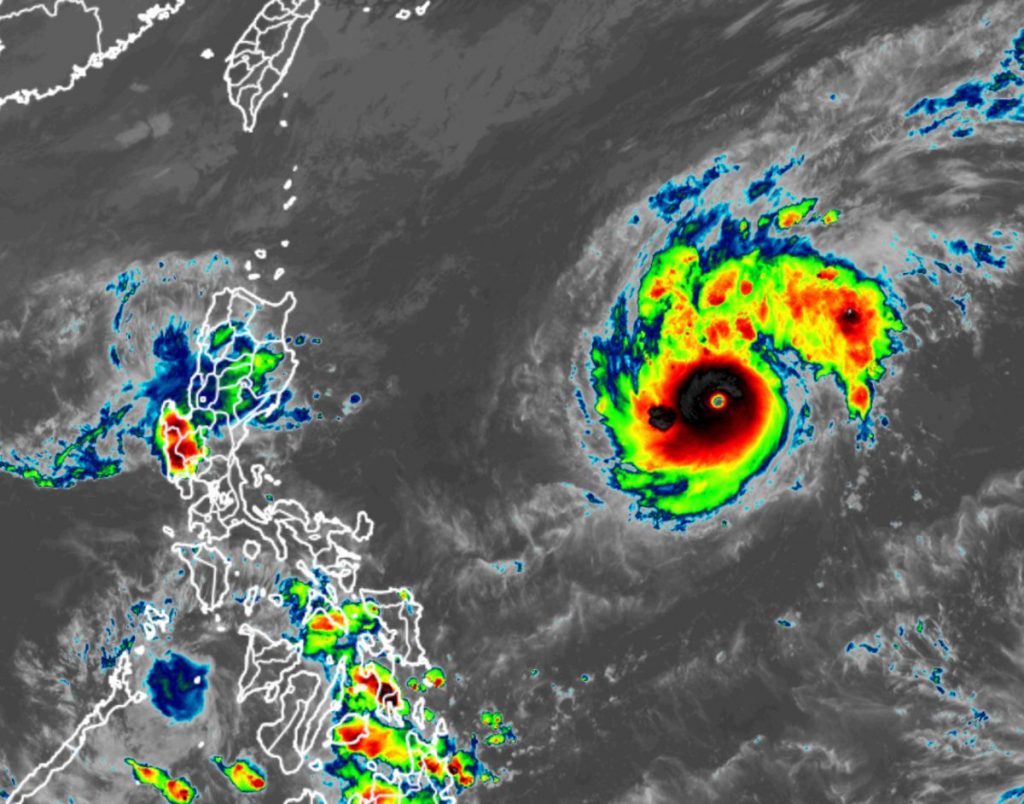Typhoon2000.com (with back-up domain names such as: “www.typhoon2000.ph” & “www.maybagyo.com”) is a website which provides “easy-to-understand” tropical cyclone information over the South China Sea and Northwest Pacific Basin (from Malay Peninsula – 100° E up to the International Date Line – 180°). This website is updated every 6 hours (12pm, 6pm, and 6am Philippine Time ~ GMT+8) during times of tropical cyclone activity except 12am Philippine Time (to be included if Tropical Cyclone will pass over the Philippine Islands or close to Bicol Region).
Typhoon2000.com is often referred to as a “one-stop” web portal which links all Asia-Pacific warning centers monitoring active or existing tropical cyclones.
The tropical cyclone information available on this site are taken from different online meteorological agencies from around the world-wide web namely: WeatherPhilippines Foundation Inc., Philippine Atmospheric Geophysical & Astronomical Services Administration (PAGASA), U.S. Navy’s Joint Typhoon Warning Center (JTWC) based in Pearl Harbor, Hawaii, United Nations’ Regional Specialized Meteorological Centre (RSMC) Tokyo-Typhoon Centre (Japan Meteorological Agency), & Hong Kong Observatory.

Typhoon2000 was established in November 02, 1997 @ Naga City (13.6N 123.2E), Camarines Sur, Philippines. Managed and maintained by David Michael V. Padua. You can reach us at:
Typhoon2000
c/o David Michael V. Padua
Naga City 4400
Camarines Sur, Philippines
Twitter: @Typhoon2k
Email: contact@typhoon2000.ph
Landline: +6354-8713036
Credits
Storm warnings, bulletins, advisories, satellite & radar imageries, satellite & radar fixes, tracks, probabilities, news reports, & some graphic images on this website (including its subsites) are taken and provided courtesy of the ff.:
(1.0) WeatherPhilippines Foundation, Inc. (WPF);
(1.1) MeteoGroup (USA/UK-Based with Worldwide Presence);
(1.2) Philippine Atmospheric Geophysical and Astronomical Services Administration (PAGASA);
(2) National Oceanic & Atmospheric Administration (NOAA);
(3) Joint Typhoon Warning Center (NPMOC/JTWC, Pearl Harbor, Hawaii);
(3.1) Jim Leonard’s Image on Hurricane Georges (USA);
(3.2) Wunderground.com (Tropical Cyclone Forecast Models) [USA] ;
(3.3) Remote Sensing Systems (QuikScat Vector Maps) [California, USA] ;
(4) National Weather Service of Tiyan, Guam;
(5) Japan Meteorological Agency (JMA);
(6) Hong Kong Observatory (HKO);
(7) Central Weather Bureau (Taiwan);
(7.1) Digital Typhoon (KITAMOTO Asanobu @ National Institute of Informatics, Japan);
(8) Japan Weather Association (JWA);
(9) Weather Underground of Hong Kong;
(10) UniSys Corp. Wx. Server (USA);
(11) Hawaii Solar Astronomy;
(12) Naval Research Laboratory (Monterey, Ca., USA);
(13) Global Tracks: Worldwide Tropical Cyclone Tracking Software (www.gtracks.com)
(14) Cooperative Institute for Meteorological Satellite Studies (CIMSS @ University of Wisconsin);
(15) Florida State University Meteorology Dept.;
(16) University of Kochi (Japan);
(17) Federal Emergency Management Agency (FEMA);
(18) DisasterRelief.org;
(19) Yahoo Weather;
(20) NASA’s TRMM Tropical Cyclones Database;
(21) News & Media Agencies on the net: CNN.Com, Intellicast.Com, ABS-CBN, GMAQuest, Philippine Daily Inquirer, & Manila Bulletin;
(22) Tropical Storm Risk (TSR) (UK Joint Organization)
Java and MPEG movies courtesy of the ff:
(1) NPMOC/JTWC;
(2) CIMSS;
(3) Naval Research Laboratory;
(4) University of Kochi
Various computer forecast model ensembles on this site especially the front page are taken and provided courtesy of the ff.:
(1) Kerry Emanuel’s Real-time Track and Intensity Page (MIT);
(2) NCEP/EMC Tracking of Cyclogenesis in Models (NOAA/NWS)
